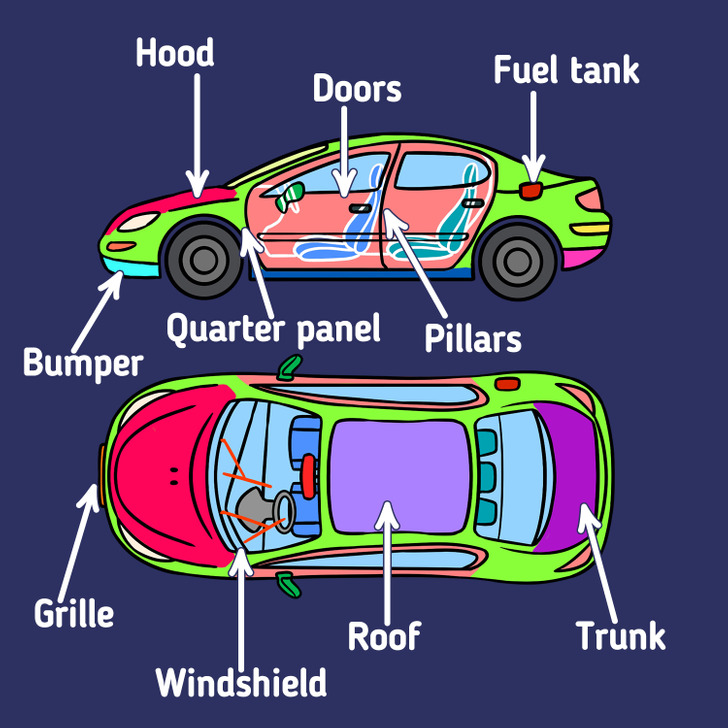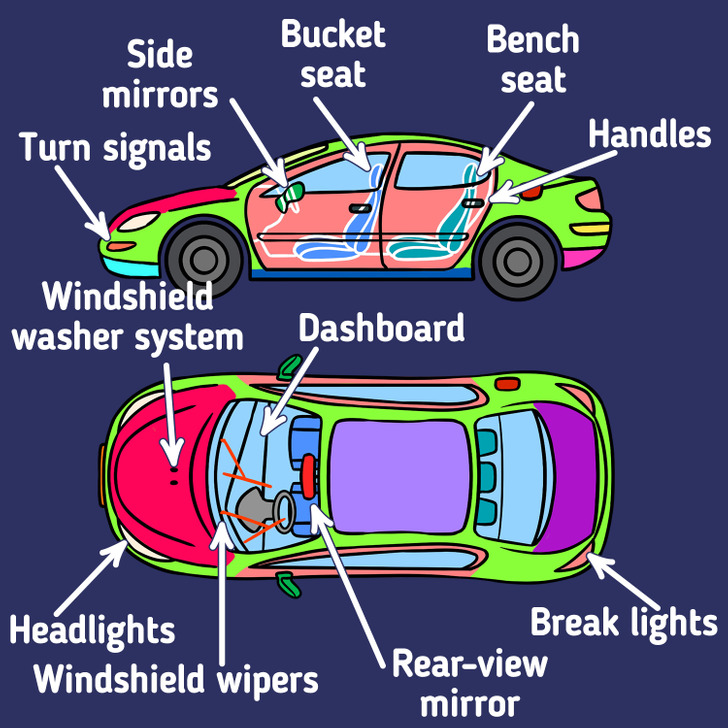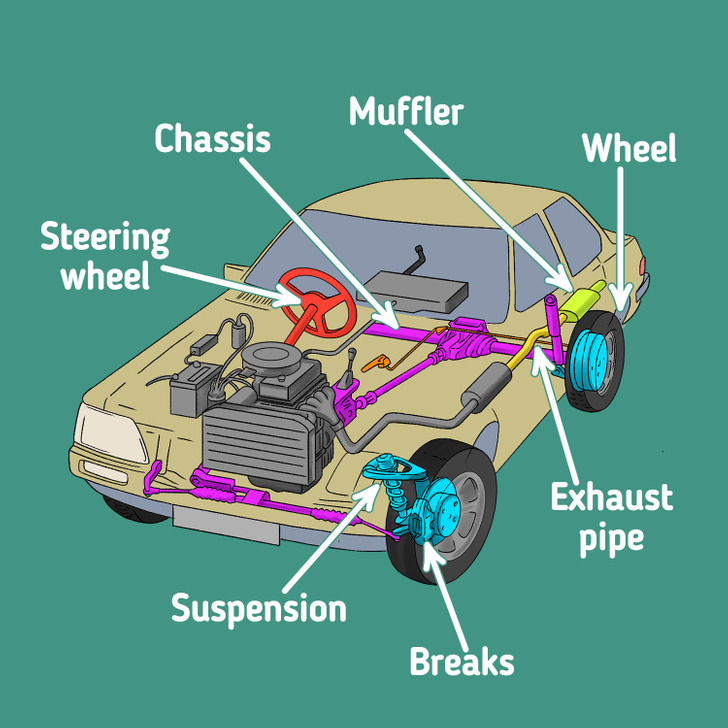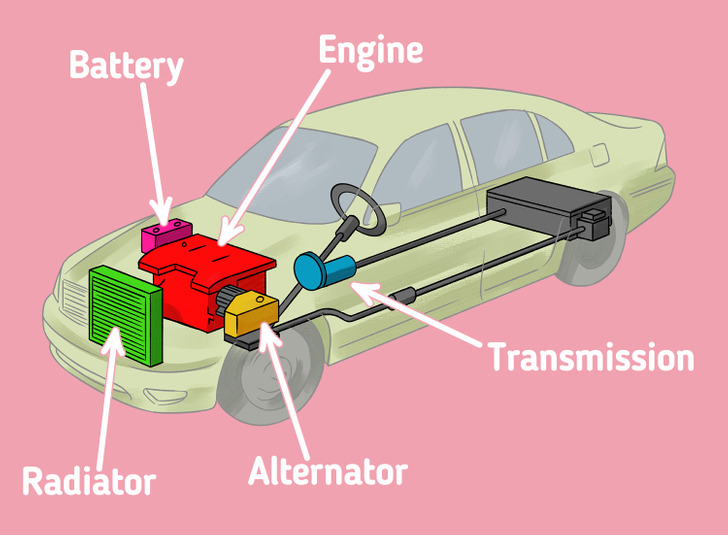A Guide to Car Parts and Their Location
A car has 4 main components: engine, chassis, transmission, and body. But these components consist of many other parts.
5-Minute Crafts prepared a guide for you from which you’ll know what different car parts are called and where they are located.

The body of a modern car consists of an engine compartment and a passenger cabin.
The hood is a hinged cover at the front of a car that houses the engine or, in some cases, the trunk.
The bumper is a structure attached to the front and rear ends of a car or integrated with it. It’s designed to absorb impact.
The grille is designed to protect the radiator and engine, and also allows air to pass through. It’s usually located at the front of the body.
The windshield is located in the front part of a car. It provides visibility and protection for passengers from weather conditions, dust, stones, insects, and so on. It’s capable of absorbing UV rays.
The trunk is a compartment designed to store or transport things. It’s usually located at the rear end of a vehicle, but can also be located both in the front and in the rear.
The quarter panel is a part of the body, which is located between the rear door and the trunk or between the hood and the front door. It usually wraps the wheel well. There are variations of a quarter panel, which go beyond the car body. It’s located above the wheel, and prevents stones, dirt, and splashes coming from under the rotating tire from damaging the body.
The pillars are vertical or almost vertical supports of a car’s windows.
The doors are designed for entering and exiting a car. They can be locked for security, and are usually equipped with side windows.
The roof is located above the cabin and protects passengers from weather conditions.
The fuel tank is located under the rear or middle of a car. It’s filled with gas.

Handles open and close car doors.
Side mirrors are located outside and allow you to see what is behind the car and on the sides of it.
Windshield wipers are automatic wipers that remove water, snow, debris, etc. from the windshield, allowing the driver to see ahead.
The windscreen washer system allows you to clean the windshield, and in some car models, the rear window as well.
Headlights are lamps in the front of the car, designed to illuminate the road ahead.
Break lights are red lights located at the rear of a car. They become brighter during braking, warning drivers behind that the car is going to stop.
Turn signals are light indicators located on the 4 corners of a car. They are activated by the driver to show their intention to perform a maneuver.
The rear-view mirror is located inside the cabin and helps the driver to see the road behind them through the rear window.
The dashboard is located in front of the driver and displays all controls and instruments for driving a car.
The bucket seat is a seat for one person in the front part of a car.
The rear bench seat is an elongated seat at the rear of the car, designed to seat several people, usually up to 3.

The chassis is like a skeleton, this is the main supporting structure of a car, to which all other components are attached.
The wheel consists of a tire, rim, and hubcap. It helps a car move and is the link between the chassis and the road.
The steering wheel controls a car while driving. It’s located inside the cabin between the front seat and windshield.
The exhaust pipe directs exhaust fumes away from passengers. It’s located at the rear.
The muffler dissipates the loud sounds created by the engine. It is part of the exhaust system, located at the rear bottom of your car.
Suspension is the system that connects a vehicle to its wheels while maintaining traction and driving comfort.
Brakes are one of the most important safety systems. They are located on all 4 wheels.

The internal combustion engine is the heart of the car. It’s usually located at the front under the hood but in some models, the engine may be located at the rear or in the middle. It consists of a timing chain, camshaft, crankshaft, spark plugs, cylinder heads, valves, and pistons.
The battery provides energy to start the car and stabilizes the voltage in order to keep your engine running.
The alternator powers most of a car’s electronic components, such as headlights, power windows, dashboards, and so on. It is also responsible for charging your car battery while driving.
The radiator cools the engine.
The transmission shifts gears and sets the car in motion.